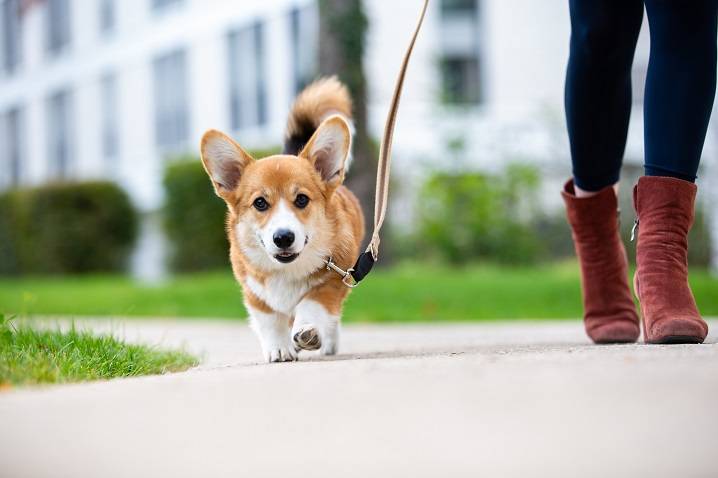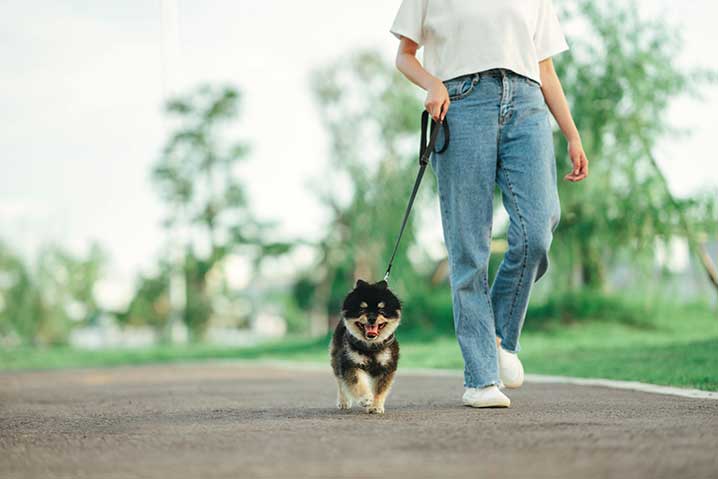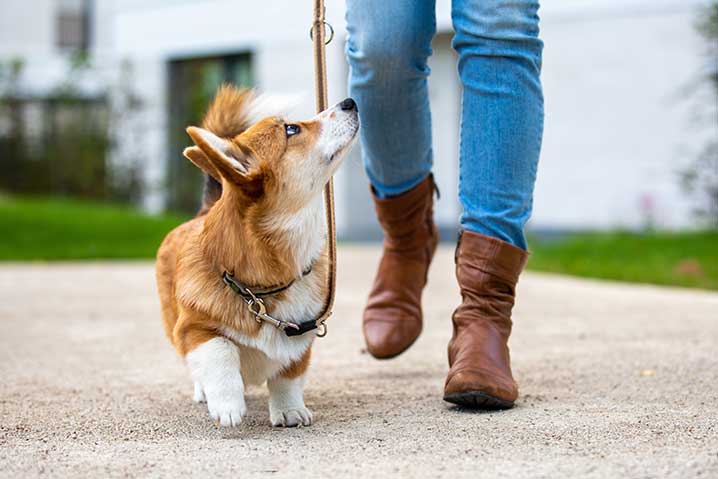As a dog owner, you may see your dog get so excited when you are about to take it for a walk. In fact, there are many things that excite a dog, but why do dogs love going for walks? Let’s find out in this post!
Dogs love going for walks because they are domesticated pets and still retain their natural tendency of going outside for a walk to exercise and explore new things. In addition, dogs are smart and social animals. They know a walk will provide quality time with his best friend – you and the opportunity to know other dogs.

Why do dogs love to go for walks?
Dogs are naturally curious and are born to explore new things. There are three reasons why dogs get so excited to go on walks.
Scent
Dogs have sensitive noses and they like to sniff whenever there is a strange smell such as the scent of a new animal, food, or chewable object.
Sound
Sound is something that can get our canine friend’s attention. A natural reaction might be to run in the direction of the suspicious sound or run away in fear, so keep an eye on your pet.
Exercise
Dogs love to go for walks because they have a chance to exercise. They benefit from walking both physically and mentally.
Walking helps dogs stay in good shape, increase flexibility and limberness, and reduce digestive problems. In terms of mental health, a walk provides your dog a chance to explore the wilder world and promotes a sense of bonding.
Exercising through walks awakens the dog’s body, pumps more blood to the brain and produces natural hormones that help reduce stress, therefore, promoting its mental well-being. A study conducted on ten random dogs in my center shows that dogs that exercise regularly have fewer unwanted behavior problems than others.
How much do dogs love going for a walk?

Depending on the type of dog, they have different ways of expressing their excitement before a walk. Some will turn around with their nose pointing up and bark. Some will run around you while you are lacing up our shoes. Others may jump on you or bow and wag its tail. Quite often, these behaviors are accompanied by a big doggie grin.
With these dogs, when you look at them, it’s like a kid asking his mom eagerly: “Mom! Are we gonna go out and grab some candies now?” So adorable! While dogs with less excitement to go out may wag their tail and look outside.
Recommendations for walking your dog
Depending on dog specifications, the walking time can vary greatly.
- In the first few days of the walking program, start at 10 minutes/day and work your way up.
- Most dogs benefit from a 30-minute walk each day, depending on breed, age, past activity level, and any health problems, as well as on weather conditions.
- Walking your dogs means taking it outside to the street or park but not letting it out in the yard. You should spend time walking with it for both social reasons and a sense of bonding between you and your dog.
- Remember to choose a proper leash size for your dog. If it is too tight, your pet may feel uncomfortable or hurt which then reduces the effectiveness of exercise walking.
Leashes choosing advice

The leash can affect the quality of the walking session. There are three recommended types of leash you can choose from:
- Nylon leashes: These are durable, cheap, and lightweight. However, they may cause some cuts and rope burns due to sudden pulls.
- Chain leashes: This type of leash can be a solution for dogs who love to chew their leashes. However, you and your pet may expect some soreness in the arm and neck because the rope is pretty heavy. Chain leashes are mostly used for big and muscular dogs. Smaller breeds should opt for Nylon or extendable dog leash.
- Extendable, or retractable dog leash: The biggest advantage of the leash is the extra room for your pet to explore. However, it could be dangerous if you walk your puppy near traffic, so look for one that has a head halter.
Things to keep in mind when walking your dog
If you plan to walk your dog in inclement weather, these are a few things you should pay attention to keep your dog safe.
- When it is hot, avoid walking too long outside and don’t forget to bring water. Dogs have fur which causes them problems in cooling down, especially for short muzzle dogs. Pay attention to the pet’s expression. If he opens his mouth and gasps or refuses to walk and lies on the street, take him home immediately.
- Equip your pet with a set of booties on snowy days. This equipment helps prevent ice from getting into the dog’s paws.
- Wash the dog’s feet after walking it in icy conditions to take off the rock salt picked up from melting ice on roads.
- The hair between the pet’s toes will collect a lot of snow, so make sure to keep it short.
Do all dogs love walks?

Although most dogs love walks and need to go out on daily walks, there are some who don’t like this exercise or seem less excited.
If your dog used to love walking but is starting to refuse to go outside, it may be having one of the following problems:
Your dog is sensitive to weather
Dogs’ physical characteristics make it uncomfortable for them to go outside in certain weather patterns. For example, long-haired dogs don’t like strolling when it’s hot, or short-haired dogs don’t like going out when it’s cold.
The regular route is not interesting anymore
If the dog refuses to go with you on a familiar route and looks away, it may be bored by taking the same route day by day. You can change the route or increase the fun of the walks by adding object-finding and sniffing games. If possible, drive your pet to new places where it can smell and explore new things. This way, the dog will be curious and excited whenever you take it outside.
Your pet is sensitive to environmental stressors
There are some dogs who are sensitive to their surroundings. Strangers or other dogs can make them afraid to go out. To help these sensitive, fragile dogs, try walking in quieter hours such as early in the morning or late in the evening.
The dog is sick
If the dog refuses to go out for a walk, is not eating, and is tired, he is sick or suffering from an underlying health problem that you are not aware of. Then you should take the dog to the vet for medical examination and treatment instead of trying to pull them out.
Conclusion
Dogs love to go out for a walk because they want to exercise, be with their owners, and explore the outside world. If your dog suddenly refuses to go outside, observe and handle it properly. In addition, paying attention to equipment like leash, booties, and water when going out will help protect our furry friends.
Related posts:
